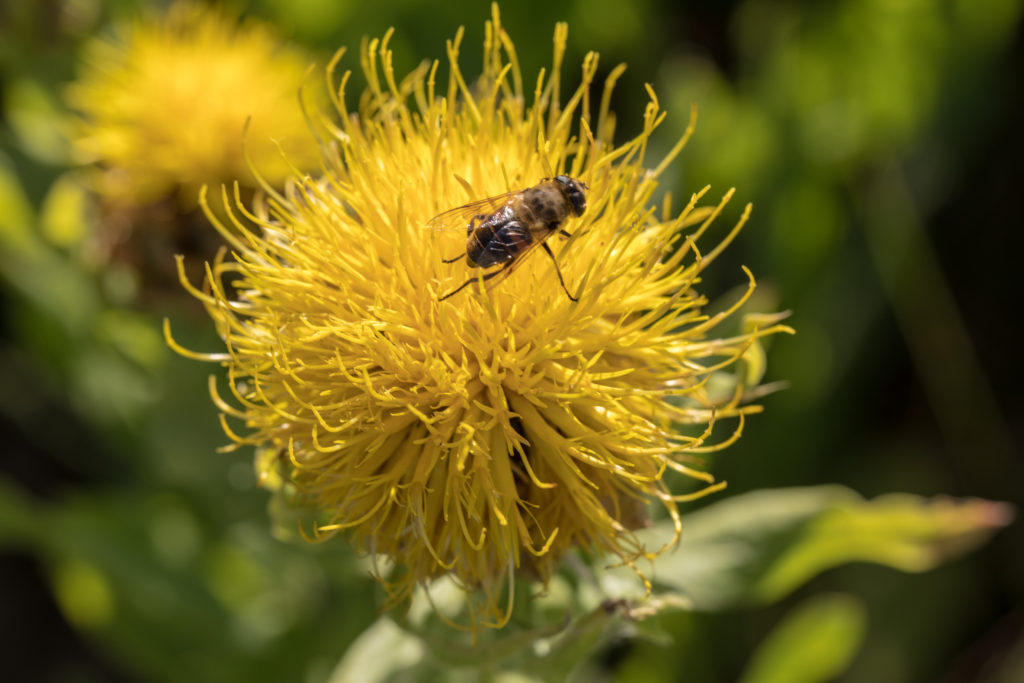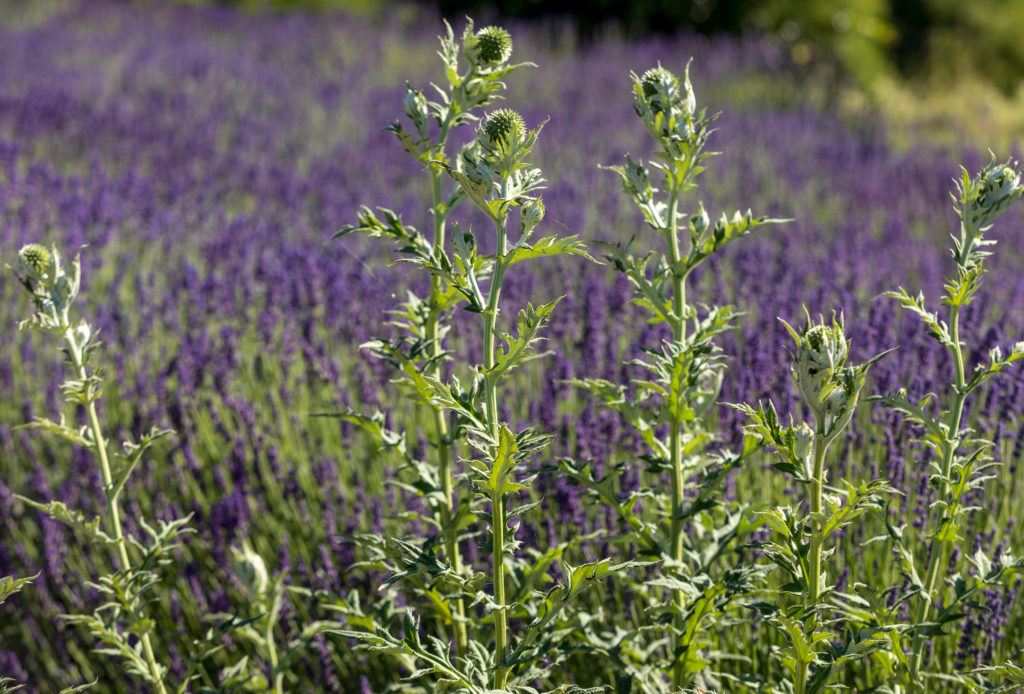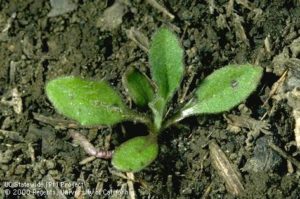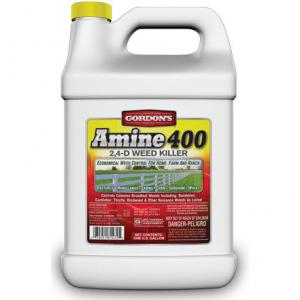
Starthistle Management and Prevention
Posted by Grange Co-op on 24th Apr 2019
Starthistle is one of the most widespread invasive broadleaf weeds in the United States. Since being introduced to California around 1850, it has infested rangelands and natural areas across the nation. It continues to spread via cultivation, poorly timed mowing, road building and maintenance, and overgrazing. Each individual plant can produce over 100,000 seeds; dense infestations yield 50 to 100 million seeds per acre. This GrangeKnows article contains techniques to control starthistle, prevent infestation and the steps required for each.

While we discuss eradication of starthistle it is extremely important to note starthistle does provide environmental benefits. The thistle produces vivid yellow blossoms that are especially good honey plants for pollinators. Each flower can produce a steady nectar flow of .123 mg daily. Per bee colony, these plants can bring in 50 pounds or more of extremely sweet, heavy bodied, high quality honey that has excellent flavor. It is vital landowners consider these consequences when managing starthistle.
IDENTIFICATION
Yellow starthistle is a taprooted, winter annual, or rarely a biennial or short-lived perennial plant. The stock of the plant is a gray-green to blue-green color. Plants produce one to many solitary, spiny, yellow flower heads that appear winged. It can grow to heights varying from 6 inches to 5 feet, depending on the conditions.
Yellow starthistle proliferates along roadsides. Seeds are often spread by vehicles or with the transportation of livestock or contaminated soil. We recommend land owners survey their roadsides for the presence of this weed and immediately control new infestations to prevent seed production and subsequent spread.
LIFE CYCLE
Yellow starthistle can grow at elevations up to 7,000 feet. It requires little water and thrives in light-intensive areas. The yellow flower heads begin blooming in late June and will continue through September and sometimes later.
The seeds of starthistles generally germinate within a year of dispersal, but some can remain viable in the soil for more than 3 years. A unique surviving tactic the starthistle exhibits is upon germination, it allocates most of its resources to root growth. By late spring, roots can extend over 3 feet into the soil, allowing survival well into summer and the ability to regrow even after top removal from mowing or grazing.
STARTHISTLE PREVENTION

Control of yellow starthistle cannot be achieved with a single treatment or in a single year. To effectively manage starthistle control of the current population, suppression of seed production, and the establishment of competitive, desirable vegetation is necessary.
Irrigation
If you have water to irrigate, almost any plant will outcompete starthistle. Starthistle is a dryland plant and cannot survive in moist, irrigated soil. Once the established starthistle has been mitigated, this is the best technique to preventing its return.
Pre-Emergent Application
To control starthistle, a pre-emergent can be applied. This will prevent the seed from germinating. Note: chemical pre-emergents may prevent and/or damage desirable plants as well. Always follow label instructions and use caution and safety when applying.
Grange Co-op’s Fertilizer and Professional Products location offers Mojave as a pre-emergent. This product is a combination of the active ingredients listed as Imaxapyr 7.78 % and Diuron 62.22%. It is a dry water dispersible pellet, designed to be mixed with water and applied before emergence of the starthistle in the fall. It requires activation into the soil with water so the best time to use this product would be entering a rain period in the fall. This is a non-crop label only and care should be taken when using this product near desirable grass, trees, etc. It is to be used after a consultation with a crop adviser and/or a pesticide consultant.
Weeding
Another way to prevent starthistle infestations is to pull all new plants at or before rosette stage. Part of the protective function of a rosette is it is hard to pull from the ground; the leaves come away easily while the taproot is left intact. Pulling prior to the starthistle getting to this stage in growth is required if you want a chance at success. Unless the area you are treating is very limited, this is an impractical method of prevention.
Seeding
For larger, tillable acreage, some have had limited success with fall seeding of a desirable grass or other forage. The idea is that desired plants come in so thick they can out-compete the thistle. We generally don’t recommend this as a primary prevention technique, as it is usually successful about 1 out of every 5 years.
Mowing

Mowing can be used to manage starthistle, provided it is well timed. Use caution, as mowing early growth stages results in increased light penetration and rapid regrowth of the weed, ultimately creating a greater problem. Repeated mowing of plants too early in their life cycles (rosette or bolting stages) or when branches are below the mowing height will not prevent seed production. If plants branch near the base, regrowth will occur from recovering branches. The flowers will merely develop below the mower cutting height and in due course, disperse their seeds. Mow well before starthistle is in full flower. In general, mowing is most effective when soil moisture is low and no irrigation or rainfall follows mowing. Mowing is a short-term solution and does not prevent starthistle from returning.
Burning
Controlled burning is best performed at the end of the rainy season, when fire danger is at a minimum and flowers first appear. The starthistle should be green at this time and will require desiccated vegetation to burn. Burning for 2 or more consecutive years helps suppress starthistle and deplete the soil seedbank. Burning can also increase the recovery and density of perennial grasses. Burning can damage biological control agents, however insects from adjacent areas will readily move back into the site the following year.
Postemergent Herbicides

Postemergent herbicide treatments generally work best on seedlings. Because of the long germination period of starthistle, controlling with only a single application is insufficient.
A post-emergent herbicide found in Grange Co-op retail stores for starthistle control is Amine 400 2,4-D Weed Killer . Available in two sizes, 2.5 GALLON and 1 GALLON , this concentrated formulation provides economical control of starthistle in lawns, pastures, rangeland, corn, sorghum, wheat and barley crops. It can also be used on fencerows, drainage ditchbanks, rights-of-way, and industrial sites. Apply in spring, summer or fall when the starthistle is actively growing. Always follow label instructions and speak with one of our GrangeExperts for any questions or concerns you may have when using this product.
Grange Co-op’s Fertilizer and Professional Products location offers a few options as well, for post-emergent chemicals. Aminopyralid (Milestone) is a selective herbicide that can be used on non-crop, pasture and grasses grown for hay and natural areas. This product must be applied from the rosette to bolting stage. Always follow label instructions, notice it does contain, “Hay from grass treated with Milestone within the preceding 18 months can only be used on the farm or ranch where the product is applied unless allowed by supplemental labeling” . This product is very safe for animals but stays active in the soil and is still actively picked up by the grass, so it has a restriction for hay and manure use. Again, this is a product that should have a consultant from a crop adviser and or a pesticide consultant.
Clopyralid (Stinger and generic Clopyralid) is another selective herbicide but not nearly as restrictive as Aminopyralid. The restrictions it does carry pertain to usage on hay and animal manure after consumption of treated forage. This product also must be applied from the rosette to bolting stage. Consultation from a crop adviser and/or a pesticide consultant is in order.
Opensight (Aminopyralid 62.13% and metsulfuron methyl) is a dry form of Milestone mixed with metsulfurom methyl. This mix improves the spectrum of weed control. It can be used in non-crop, natural areas, as well as hay and pasture. Restrictions still include usage on grasses harvested for hay, and manure use after consumption of sprayed forage. It also has a warning on use restrictions for fescue grass grown for hay as it can suppress seed head formation and growth. Consultation needed before spraying.
Bromoxynil (Broclean) is a product that can be used on some crops and non-residential turfgrass. Again, this is a product that should have a consultant from a crop adviser and/or a pesticide consultant.
In some locations, treating for starthistle isn't necessary. However, if it is in a location you want to control its spread, following the steps and tips we've provided can be of help. For further assistance or if you have more questions, visit one of our stores and discuss them with one of our Grange Experts. We're happy to help!
Sources:
http://ipm.ucanr.edu/PMG/PESTNOTES/pn7402.html
https://www.techlinenews.com/articles/2012/12/30/yellow-starthistle-management-with-herbicide
